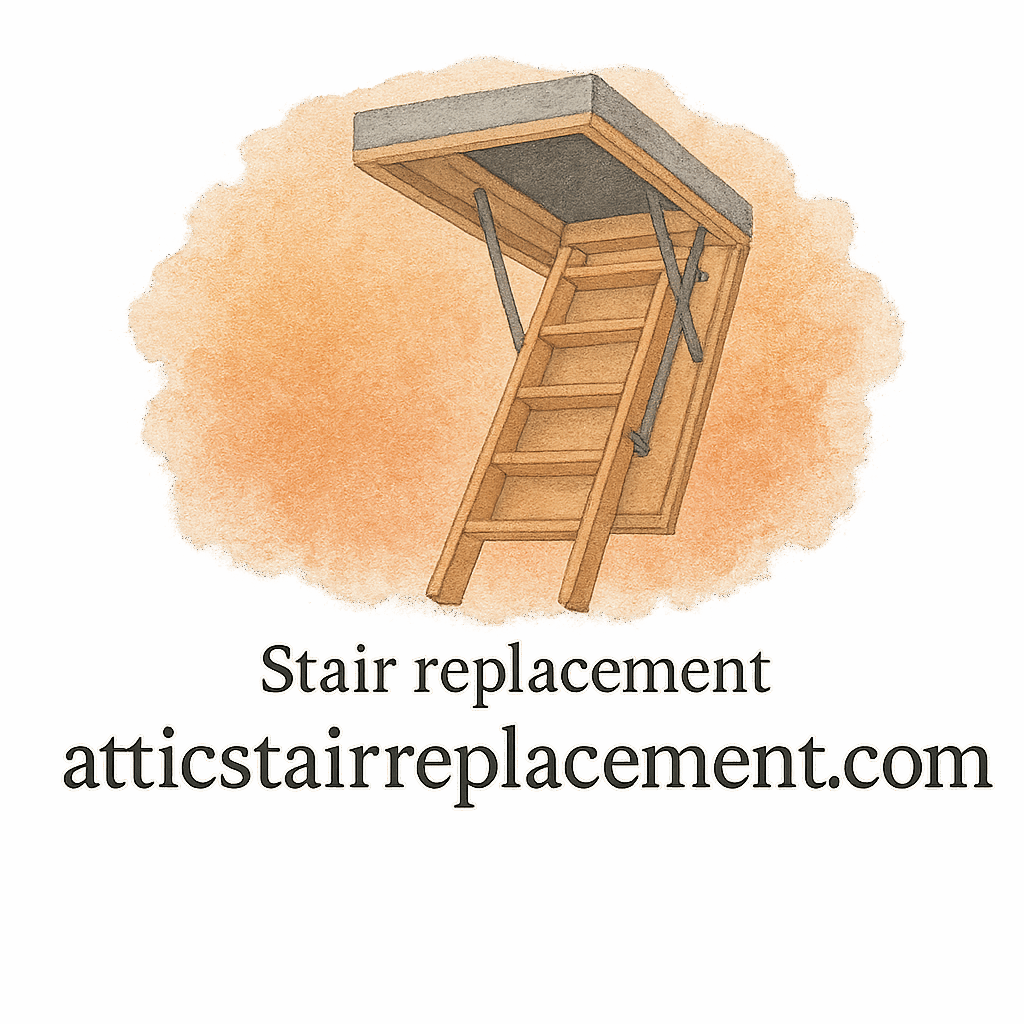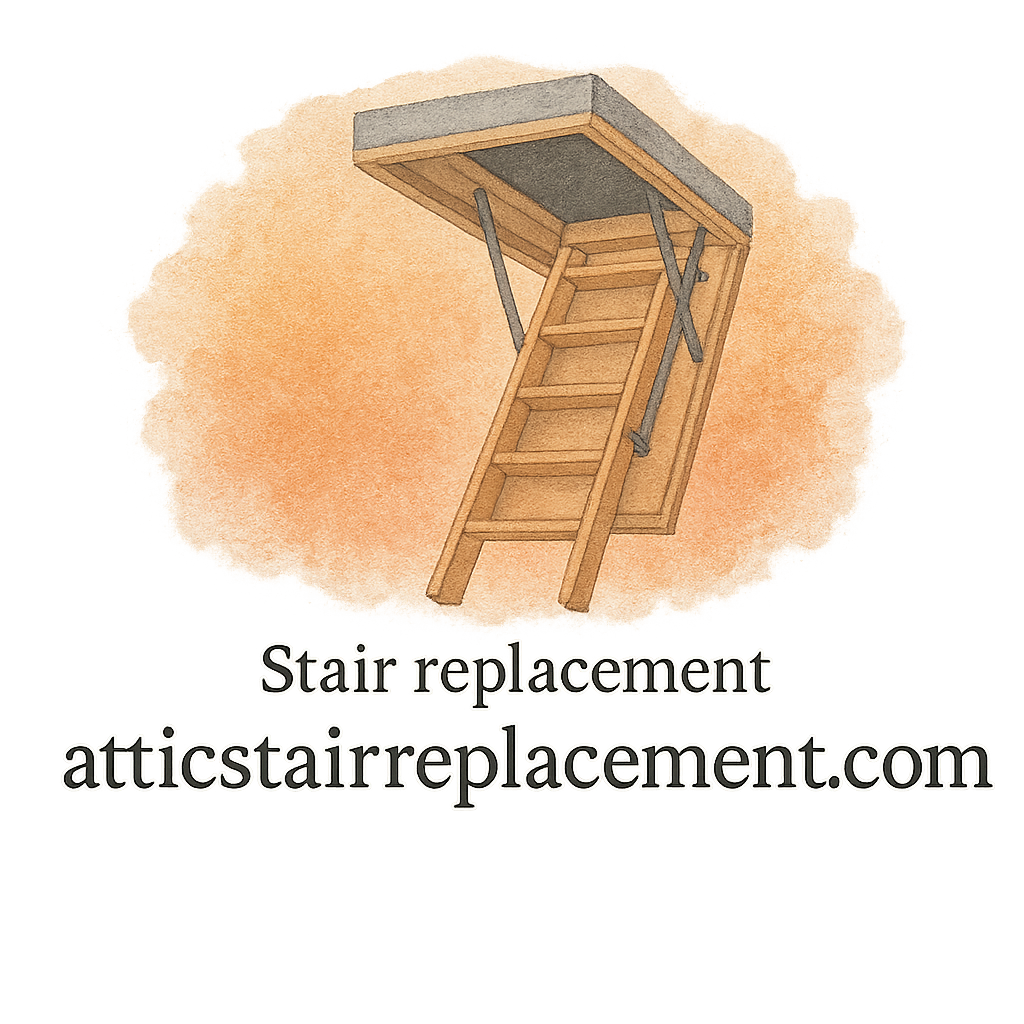Introduction: Why Attic Stair Replacement Can Be Tricky
Replacing attic stairs might sound like a straightforward home improvement project, but in reality, it comes with plenty of hidden challenges. Whether you’re tackling it as a weekend DIY project or considering hiring a contractor, the smallest mistake can compromise safety, durability, and even your home’s energy efficiency.
In this guide, we’ll walk through the 9 most common DIY mistakes in attic stair replacement—and how to avoid them. By the end, you’ll know how to install your new stairs safely, avoid unnecessary costs, and create a long-lasting upgrade for your home.
Common DIY Mistakes in Attic Stair Replacement
Mistake #1: Skipping Accurate Measurements
Why precise measurements matter
One of the biggest beginner mistakes is assuming attic stair sizes are “standard.” Wrong! Every attic entry is slightly different, and if you skip exact measuring, you’ll either buy the wrong product or struggle with a poor fit.
How to measure properly
Use a reliable tape measure to check:
- Opening length and width
- Floor-to-ceiling height
- Clearance space for folding
Write down everything twice. Remember the saying: measure twice, cut once.
Mistake #2: Choosing the Wrong Type of Attic Stairs
Folding vs. telescoping vs. electric
Not all attic stairs are created equal. Folding stairs are common, telescoping ladders save space, and electric stairs offer convenience. Choosing the wrong style for your attic can make everyday use a nightmare.
Matching stairs to your attic needs
Ask yourself: Do you use your attic for heavy storage? Occasional access? Regular foot traffic? Match the stair style to your lifestyle, not just your budget.
Check out our product reviews to compare different models.
Mistake #3: Ignoring Weight Capacity
Dangers of weak stairs
Using attic stairs that can’t handle your weight—or the weight of your storage—can cause them to snap under pressure. That’s not just frustrating; it’s dangerous.
How to check load ratings
Look for the manufacturer’s load capacity rating. Most sturdy options are labeled as heavy-duty or strong. Always overestimate rather than underestimate the weight you’ll need.
Mistake #4: Using Low-Quality Materials
Durability vs. budget concerns
Yes, you can save money by buying cheap wood or aluminum stairs, but they’ll wear out faster. A creaky, wobbly ladder isn’t worth the short-term savings.
Recommended sturdy options
Opt for hardwood, steel, or reinforced aluminum models. Read our expert advice on which brands last the longest.

Mistake #5: Poor Installation of the Frame
Why framing is the backbone
Your attic stairs rely on the frame for stability. If the frame isn’t square, level, and secure, the entire installation will feel unstable.
Common frame alignment errors
Many DIYers forget to shim uneven gaps or fail to anchor the frame properly. This leads to squeaks, shifting, and unsafe stairs.
Mistake #6: Forgetting About Safety Features
Handrails, locks, and stability
Skipping safety accessories like rails and locks might save time, but they’re critical for preventing falls.
Preventing slips and falls
Add non-slip treads or grip tape. For more tips, see our safety upgrade guide.
Mistake #7: Overlooking Ceiling and Insulation Issues
Heat loss and energy efficiency
Your attic is a prime spot for heat loss. Installing new stairs without sealing and insulating the opening can raise energy bills.
Air leaks around attic stairs
Use weatherstripping and insulation covers to prevent leaks. Learn how in our maintenance and repair guide.
Mistake #8: Not Following Manufacturer Instructions
Why instructions exist for a reason
Every attic stair model has unique parts and steps. Ignoring the manual often leads to mistakes that could void your warranty.
Avoiding costly re-dos
Follow the guide step by step. If you hit a snag, check the brand’s online installation videos or seek expert input.
Mistake #9: Rushing the Job
Safety risks of rushing
DIYers often underestimate the time required. Rushing leads to skipped steps, misaligned frames, or even injury.
How to plan a steady pace
Set aside an entire day. Lay out tools in advance, take breaks, and don’t be afraid to pause and double-check your work.
Pro Tips for a Successful Attic Stair Replacement
Tools you’ll need
Gather these before starting:
- Drill and bits
- Level
- Hammer and nails
- Wrench set
- Safety goggles and gloves
When to call a professional
If your ceiling joists need cutting or if you’re unsure about structural integrity, it’s safer to hire a pro. Visit our DIY vs. contractor guide for a cost breakdown.
Internal Resources to Help You Do It Right
Conclusion: Take Your Time and Do It Right
Attic stair replacement is one of those projects that looks simple but comes with hidden pitfalls. Avoid the 9 DIY mistakes above, and you’ll not only save money but also ensure your new stairs are durable, safe, and energy-efficient. Whether you’re doing a quick renovation or a full home project, careful planning and patience make all the difference.
FAQs
Q1. How long does attic stair replacement usually take?
Typically 4–6 hours if you’re experienced. Beginners should block off a full day.
Q2. Can I reuse my old attic stair frame?
Sometimes, but only if it’s square and damage-free. Most experts recommend replacing it.
Q3. Do attic stairs need insulation?
Yes! Without insulation, you’ll lose heat and pay higher energy bills.
Q4. What’s the safest attic stair material?
Steel and hardwood are the most reliable and long-lasting.
Q5. Can attic stairs be installed in any ceiling?
Not always. You need the right joist spacing and clearance.
Q6. How often should I inspect attic stairs?
At least twice a year. Check for cracks, loose screws, or weak spots.
Q7. Is professional installation worth the cost?
Yes, especially if you’re uncomfortable with structural work. A pro ensures job quality.


